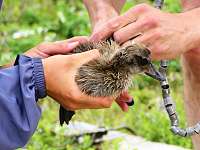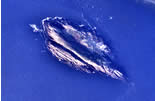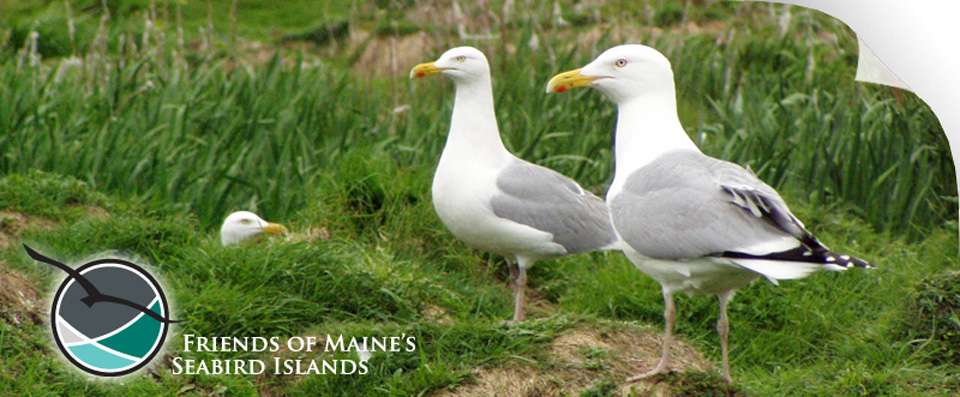Conservation Partners
Bringing together people and organizations is perhaps the most important role that Friends of Maine’s Seabird Islands can play. We see ourselves as communicators and coordinators of the vital conservation work that these remarkable organizations continue to do, year after year, decade after decade. 
Click on the links below to read more about our partner organizations:
Maine Coastal Islands National Wildlife Refuge (formerly Petit Manan National Wildlife Refuge)
Project Puffin and the Seabird Restoration Program
Maine Coastal Program (administered by the Maine State Planning Office)
Maine Department of Inland Fisheries & Wildlife
Maine Island Trail Association
Maine Coastal Islands National Wildlife Refuge
In 2005, the Refuge completed its Comprehensive Conservation Plan, which contains a wealth of information about the Refuge. The entire Plan can be found here.
The following are excerpts from the Plan:
 Petit Manan Island. Biologists live on this island each nesting season to conduct surveys, control predators and band seabirds. Maine Coastal Islands National Wildlife Refuge staff and seasonal technicians conduct a complete census of the island each year and record observations of all species observed on or adjacent to the island (more…).
Petit Manan Island. Biologists live on this island each nesting season to conduct surveys, control predators and band seabirds. Maine Coastal Islands National Wildlife Refuge staff and seasonal technicians conduct a complete census of the island each year and record observations of all species observed on or adjacent to the island (more…).
Seal Island. The Maine Coastal Islands National Wildlife Refuge continues to work cooperatively with National Audubon Society on the Seal Island Seabird Restoration Project. Researchers are currently supporting Arctic tern and Atlantic puffin research projects in cooperation with the University of Massachusetts (more…).
Metinic Island. Biological technicians are hired seasonally to work on this tern restoration program. The interns census terns, control predators, conduct food habit and productivity studies, and monitor vegetation response to grazing (more...).
 Pond Island. The island is managed in cooperation with National Audubon Society, and biological technicians staff the island during the nesting season. The beach on Pond Island could potentially provide limited habitat for least terns and piping plovers. The island is also an important staging area for common and roseate terns in August (more…).
Pond Island. The island is managed in cooperation with National Audubon Society, and biological technicians staff the island during the nesting season. The beach on Pond Island could potentially provide limited habitat for least terns and piping plovers. The island is also an important staging area for common and roseate terns in August (more…).
Matinicus Rock. The island is predominantly an Arctic tern colony (999 pairs) but also supports 198 pairs of common terns. The Maine Coastal Islands National Wildlife Refuge manages the island in cooperation with National Audubon Society. It is participating in Arctic tern and Atlantic puffin research projects in cooperation with the University of New Brunswick (more…).




